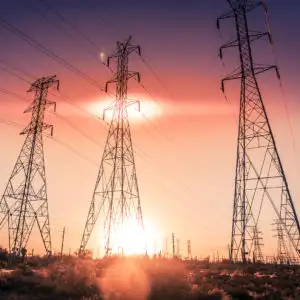Homes with solar panels to get subsidy
TORONTO, ONTARIO - Ontario will soon offer Canada's first subsidy to homeowners or businesses that install solar electric power.
The incentive — 42 cents for every kilowatt-hour of electricity produced — is awaiting final approval from Premier Dalton McGuinty, industry sources say.
To produce solar power, an average house would need a system that costs $20,000 to $30,000.
All the electricity generated would be sold to the local utility company and go into the overall power grid. It would be worth $1,000 to $1,500 a year. But, homeowners would continue to buy their power from the utility at whatever the current rate was. The price now is under 6 cents a kilowatt-hour, but is expected to rise in May.
With the energy savings, the system could be paid off in 20 to 25 years. That's when the main payoff begins, since the equipment is expected to last 40 to 60 years, Rob McMonagle, executive director of the Canadian Solar Industries Association, said recently.
Although among the most generous in North America, the program won't cover the entire cost of installing equipment that converts the sun's energy into electricity.
But it should be enough to kick-start an industry that now badly lags behind Japan and parts of Europe, industry officials say.
"It opens a tremendous opportunity," McMonagle said.
The solar subsidy will be part of a new incentive plan known as Standard Offer Contracts.
Under the contracts, those who generate electricity from solar and other renewable sources will be paid for all the power they produce.
The other sources — mainly wind, but also wood waste, manure or other biological sources — will earn 11 cents a kilowatt hour.
The contracts will run 20 years and apply to projects with a generating capacity of up to 10 megawatts, or enough to supply about 3,300 average homes.
There will be no cap on the total amount of money available to pay for this power.
Ontario's solar subsidy will be unique in Canada. Only Prince Edward Island now has a wind-power incentive, said Robert Hornung, president of the Canadian Wind Energy Association. "Others are looking to see what Ontario will do."
"The (solar) program is designed to start building capacity in the industry so it can handle a huge increase in demand," McMonagle said. The aim is that Ontario companies will construct and install the systems.
The contracts are expected to lead to the installation of about 15,000 solar systems, with a total capacity of 40 megawatts, McMonagle said. After that, growth should speed up until, by 2025, solar capacity hits 1,200 megawatts.
The Ontario Power Authority, the government agency responsible for ensuring an adequate long-term power supply, forecast in a recent report that solar capacity would be only 40 megawatts by 2025.
It projects that, by then, the province will need a total capacity of more than 30,000 megawatts, and recommends $40 billion worth of new nuclear generating stations to meet the demand. Critics argue that that estimate could be cut dramatically if the province pushed harder on conservation measures.
At present, in Canada, solar capacity is a mere megawatt. In contrast, Germany — with much higher electricity rates and subsidies — installs 40 megawatts of capacity every six weeks.
In 20 years, solar will be the cheapest source of power for most homeowners, McMonagle said.
Solar projects are suited for individual homes and buildings, he said.
In places like Japan and Germany, where solar is widespread, the installations increase the resale value of houses, he said.
A more cautious outlook comes from Howard Gomes, sales director of Solar Roofing Systems Inc., in Aurora, which builds and installs solar generators that are integrated into roofing material, instead of in separate panels.
Home solar installations will likely last about 35 years, and the provincial system will be at best a break-even proposition unless the payment for power is tied to inflation, Gomes said. The new contracts are "a great first step... a great move on the part of the province," but it's not enough to get solar into the mass market.
"The federal government needs to get involved," he said, so Ontario's incentives match those in the United States, where Washington offers a 30 per cent tax credit.
The 11-cent payment for wind power will "get a number of projects constructed," but it's not possible to predict exactly how many, Hornung said.
The contracts will support wind projects built by municipalities, community groups or businesses, rather than homeowners, he added. They will complement the big wind farms — with up to 100 megawatts of capacity — being erected under a different provincial policy.
The maximum size of 10 megawatts is roughly the same as 12 wind turbines like the one at Exhibition Place, on Toronto's west-end waterfront.
By the end of summer, Ontario will have about 320 megawatts of wind capacity, mainly in big projects.
Related News

Ukraine Leans on Imports to Keep the Lights On
UKRAINE - Russia's ongoing war in Ukraine has extended far beyond the battlefield, with critical infrastructure becoming a target. Ukraine's once-robust energy system has sustained significant damage from Russian missile and drone strikes. To cope with these disruptions and maintain power supplies for Ukrainian citizens, the country is turning to record-breaking electricity imports from neighboring European nations.
Prior to the war, Ukraine enjoyed a self-sufficient energy sector, even exporting electricity to neighboring countries. However, targeted attacks on power plants and transmission lines have crippled generation capacity. The situation is particularly dire in eastern and southern Ukraine, where ongoing fighting has…




